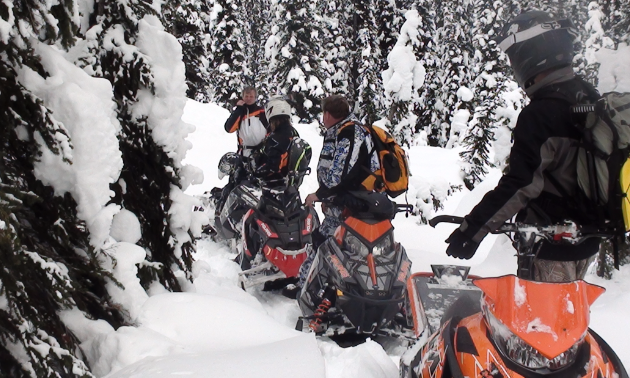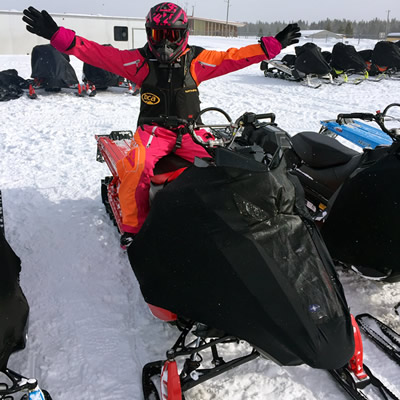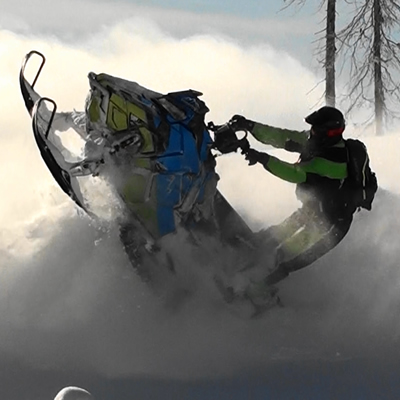We all want to bring our A game when we head into the winter backcountry. The thought of fresh powder, bluebird skies and endless hours of spontaneous fun can be intoxicating. Seemingly harmless mistakes can literally stop snowmobilers in their tracks and halt what would have been an epic day of riding. Here are some common mistakes that you can hopefully avoid.
- Batteries Batteries can be a key component of the functionality of your safety equipment. Transceivers, radio communication devices and GPS equipment all rely upon adequate battery strength. Check your batteries the night before a ride, and recharge or replace them when needed. When practicing with your transceiver, understand that the search function can drain battery life; so if you are practicing, replace your batteries after words to ensure full battery power when you are out riding. Keep a spare set of batteries in your pack for those just-in-case moments.
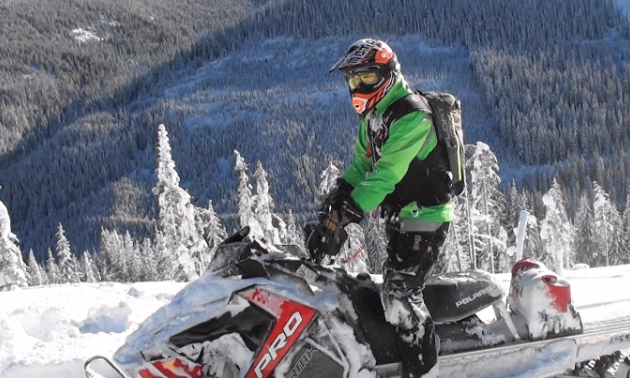
- The mad scramble Do not wait for the morning of your ride to get your gear together. Balaclavas seem to always disappear in our household. I’m certain it’s the same little gremlin stealing socks who snags our balaclavas. Many snowmobilers have arrived at the staging area only to realize their helmet, boots or other necessities have been left at home. Prepare and organize your gear the night before as though you were heading out for your ride so you aren’t depending on morning groggy brain without sufficient coffee to do the packing for you. Be sure to pack extra goggles and gloves, especially if you are the tree-bashing-pushing-your-limits kind of rider. You may be able to get away with a single set, but chances are between stucks, getting roosted and sweat—you’ll want the opportunity to swap out wet gloves or fogged and frozen goggles for fresh ones. Fill up your sled (including oil) and your truck the night before to ensure you are ready to roll come morning.
- Keys The search for the missing keys can completely destroy a day of riding. Truck keys are best stashed someplace safe rather than packed up into the backcountry. Many snowmobilers have unknowingly ditched their keys in a billowy soft snowbank while out riding. If you do take your keys into the backcountry, put them in a pocket or compartment in your bag that is rarely used to avoid losing them while looking for other contents. Make sure your snowmobile keys are with your truck when you head out for your ride along with keys to the lock if you’ve locked your super clamps to prevent theft.
- Parking brake We’ve all been there. Stop facing downhill with the parking brake on only to take off and wonder why it feels like the sled isn’t moving enough. Most who ride a lot would instantly recognize that the brake is left on and remedy the situation, but new riders have no reference point. Many people who are new to the sport won’t realize the holdback is being caused by the parking brake and continue riding, which can create a very fiery situation. Snowmobiles can ignite into flames if the parking brake is left on long enough. Help your newbies out and remind them to disengage their parking brake.
- Group size With the exception of organized group rides or events, we try to keep our group numbers down to ensure safety and communication. We are usually out in a group of four or five riders, which we find is a manageable size. Communication and keeping track of riders are easy with smaller groups. With everyone on the same page, we can spend endless hours having fun. Large groups can be hard to manage with riders often disappearing in search of freshies, leaving no word of where they are at. Too many riders in a group can impede communication, creating a chaotic situation similar to herding cats.
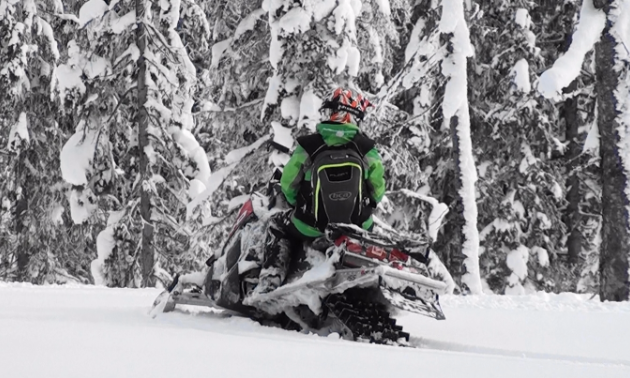
More riders also mean a wide variety of skill sets, and all groups should ride to the ability of the least skilled rider. It can be frustrating for those who want to push into more technical terrain, which could result in taking riders into a situation where they are in over their heads.
The flip side of this equation is the solo rider. Going out into the backcountry alone is never a good idea but has been a contributing factor in the fatality of riders each season. Social media such as Facebook has been a great resource for finding riding partners, with some pages dedicated to preventing solo riders out in the backcountry. Snowmobile club websites and social media pages can help you find riding buddies within your skill set to ensure you never have to ride alone.
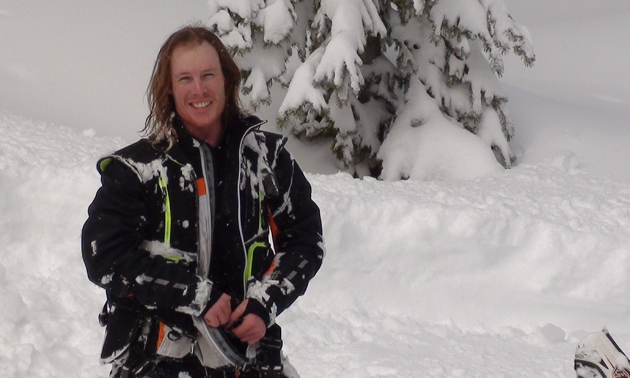
- Running behind Most groups will have a set time and place to meet up the day of a ride. It is respectful to be on time and ready to roll at the agreed time. Waiting for riders to show up can seriously cut into the fun factor of the day. If you are running behind, communicate with your group. If it’s only a few minutes, it isn’t a huge deal breaker, but if you are expecting them to wait any longer than 30 minutes, perhaps you should hang up your gloves for that day and not hold up the entire riding group. For those who are perpetually late, understand that the world doesn’t revolve around you pull up your socks and wake up earlier if you a slow mover in the morning. Time is precious, especially during the winter months when daylight hours are limited.
- Safety equipment This is the foundation of your survival in the backcountry so take the time to inspect your equipment before heading out for your ride. Avalanche bags should be blown off at the beginning of each season to ensure integrity. Many avalanche bag canisters have a gauge indicating PSI, letting you know if your canister is functioning properly. Keep a pencil and checklist of items in your safety and first aid kit in your pack. If you have used any items, write it down so you can replenish the missing items before you head out for the next ride. Practice with safety equipment such as transceivers, shovels and probes. It is also recommended that backcountry riders have two shovels: one dedicated to avalanche rescue, which remains in the backpack, and another with the snowmobile to provide easy access for stucks and trail or jump building.
- Parts and tools Always keep a spare belt, extra spark plugs and a simple tool kit with you each ride. A blown belt or faulty spark plugs could leave you stranded deep in the backcountry if you don’t have replacements. If your sled was acting up on a ride, remedy the situation before heading out again to avoid mechanical failure in the backcountry.
- Kodak courage and pow stoke These are conditions that can completely distort the minds of riders around the globe. If someone pulls out a camera, don’t try to be the hero by performing a stunt far beyond your capabilities. “Nice huck bro . . . it’s totally going on Youtube! Sorry about your broken back." Even when cameras are rolling, ride within your skill set.
Pow stoke is a condition that causes riders to toss their education and decision-making processes aside when they become intoxicated by fresh dry white gold. This happens particularly after periods of drought when fresh snow has been sparse. It can also affect weekend warriors making a long-awaited trek to the mountains while they leave their job and city stresses behind. Encountering fresh snow is exciting, but please keep your thinking caps on and ride to the conditions even if it is your only mountain trip of the year.
- Departure time It is always a good idea to head back to the staging area during daylight hours. Anything can happen—from injury to mechanical failure—which will be even tougher to deal with in darkness. Several times we’ve been with the “just-one-last-poke” type of person who waits till the end of the day to try to pull off the most gnarly stunt, only to have their efforts result in a catastrophic failure. Sled retrieval can be a tricky thing in the dark, especially if you are cold and tired. Keep everyone on the same page and agree upon a time to head back together.
- Communication We use radios with everyone in our group because communication is key while riding. It can be as simple as checking on each other or warning others to take an alternative route to avoid a sticky situation. Hand signals are simply not enough to facilitate clear crew communication. Pack extra hand-held radios for those who may not have one. Even a simple hand-held Motorola is better than nothing. Many snowmobile clubs are now co-ordinating radio channels as an added safety precaution. Should a rider become stranded or lost, a coordinated radio signal will help notify others who may be in the area, expediting rescue time.
